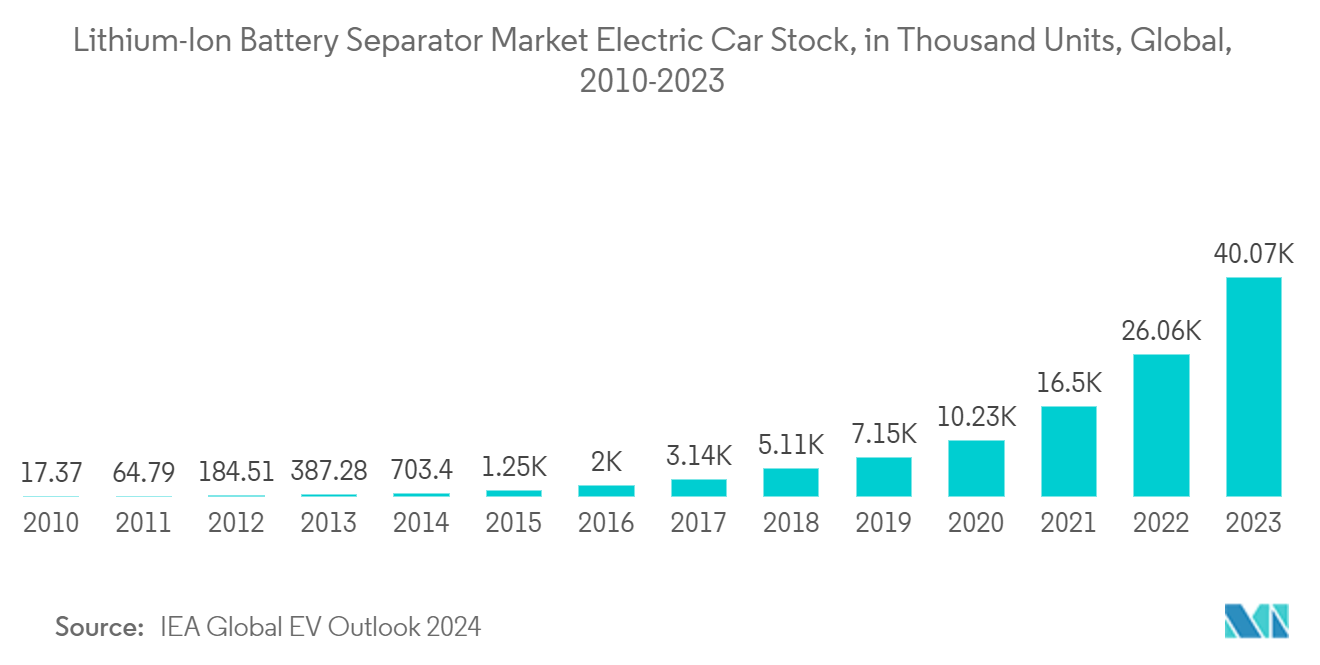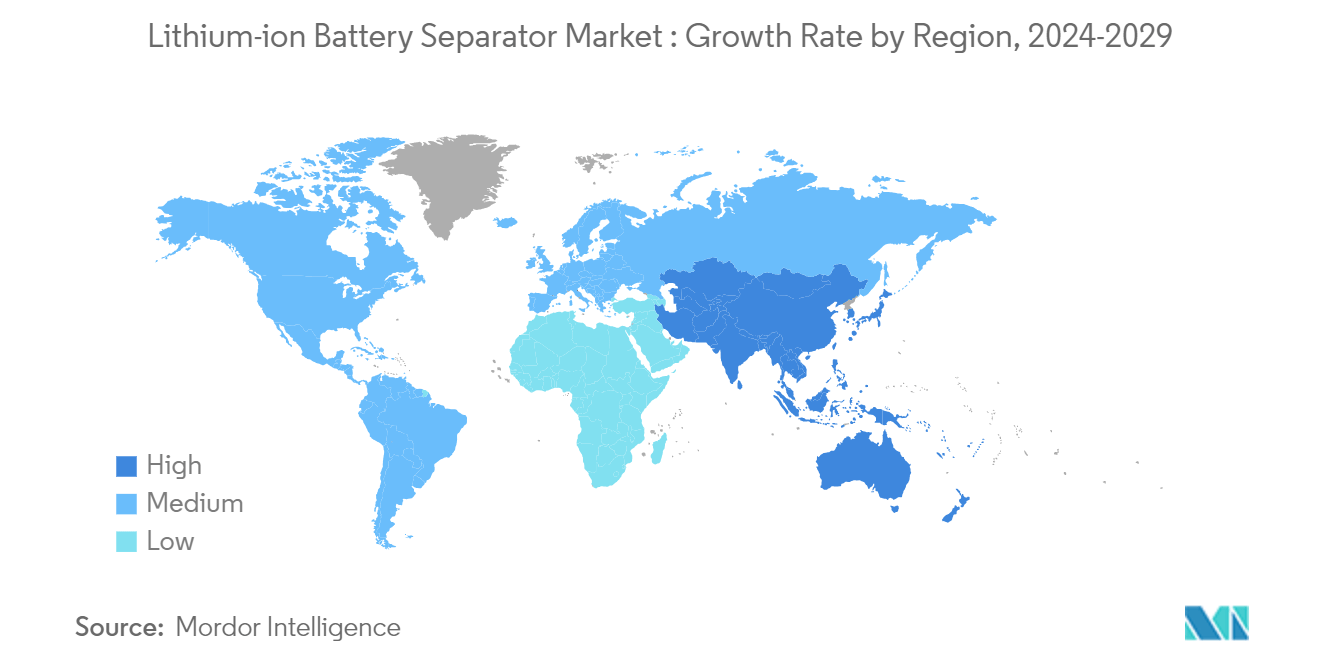Market Trends of Lithium-ion Battery Separator Industry
Increasing Adoption of Electric Vehicles is Expected to Drive the Market
• Countries in the region are the leading proponents of the global lithium-ion battery supply chain, with China, Japan, and South Korea leading the way. Countries like Australia, India, and Vietnam are also following plans to set up battery manufacturing facilities in their countries during the forecast period.
• A significant fraction of Asia-Pacific's population is estimated to live without electricity and depend on conventional fuels, such as kerosene and diesel, for their lighting and mobile phone charging needs. Lithium-ion battery integrated energy storage solutions are likely to witness an increasing rate of adoption due to the technical benefits associated with it and declining lithium-ion battery prices. This, in turn, is expected to create significant opportunities for li-ion battery separator manufacturers during the forecast period.
• The demand for lithium-ion batteries in the region is expected to grow rapidly, owing to the adoption of new energy vehicles (NEVs) and ESS for on-grid and off-grid applications.
• Furthermore, China is expected to dominate with a 57% share of the global EV market by 2030. The development of charging infrastructure is propelling EV adoption in the country. As of August 2023, EVCIPA confirmed that there were a total of 7,208,000 charging infrastructure units (public + private) in China, of which 2,272,000 charging stands were public and 4,936,000 were private.
• By 2050, Japan aims to establish a 'Well-to-Wheel Zero Emission' policy, in line with the global efforts to eliminate emissions, focusing on energy supply and vehicle innovation. Replacing all vehicles with EVs can reduce greenhouse gas emissions by around 80% per vehicle, including an approximate 90% reduction per passenger vehicle. Such government initiatives are likely to increase the demand for electronic vehicles, which, in turn, is likely to increase the demand for lithium-ion batteries.
• South Korea is also a major player in the car manufacturing market, with large corporations like Hyundai, Kia Motors, and Renault. The increasing adoption of electric vehicles is expected to increase the demand for lithium-ion batteries and their supply chain accessories, such as lithium-ion battery separators, in the country.
• Therefore, based on the factors mentioned above, Asia-Pacific is expected to dominate the lithium-ion battery separator market during the forecast period.

The Asia-Pacific is Expected to Dominate the Market
- Countries in the region are the leading proponents of the global lithium-ion battery supply chain, with China, Japan, and South Korea leading the way. Countries like Australia, India, and Vietnam are also following plans to set up battery manufacturing facilities in their countries during the forecast period.
- A significant fraction of Asia-Pacific's population is estimated to be living without electricity and dependent on conventional fuels, such as kerosene and diesel, for their lighting and mobile phone charging needs. Lithium-ion battery integrated energy storage solutions are likely to witness an increasing rate of adoption due to the technical benefits associated with it and declining lithium-ion battery prices. This, in turn, is expected to create significant opportunities for li-ion battery separator manufacturers during the forecast period.
- The demand for lithium-ion batteries in the region is expected to grow rapidly, owing to the adoption of new energy vehicles (NEVs) and ESS for on-grid and off-grid applications.
- Furthermore, China is expected to dominate with a 57% share of the global EV market by 2030. The development of charging infrastructure is propelling EV adoption in the country. As of August 2023, EVCIPA confirmed that there were a total of 7,208,000 charging infrastructure units (public + private) in China, of which 2,272,000 charging stands were public and 4,936,000 were private.
- By 2050, Japan aims to establish a 'Well-to-Wheel Zero Emission' policy, in line with the global efforts to eliminate emissions, focusing on energy supply and vehicle innovation. Replacing all vehicles with EVs can reduce greenhouse gas emissions by around 80% per vehicle, including an approximate 90% reduction per passenger vehicle. Such government initiatives are likely to increase the demand for electronic vehicles, which, in turn, is likely to increase the demand for lithium-ion batteries.
- South Korea is also a major player in the car manufacturing market, with large corporations like Hyundai, Kia Motors, and Renault. The increasing adoption of electric vehicles is expected to increase the demand for lithium-ion batteries and their supply chain accessories, such as lithium-ion battery separators, in the country.
- Therefore, based on the factors mentioned above, the Asia-Pacific region is expected to dominate the lithium-ion battery separator market during the forecast period.


